Abstract
A factor has been found in a number of human sera which renders a polyploid strain of human liver cells, Chang cells, susceptible to damage by non-immune human lymphocytes. Sera possessing this factor are referred to as Factor Containing Sera (FCS). Such damage is assessed quantitatively by release of radioactive chromium from target cells. This factor has the chemical properties of IgG and can be absorbed out on Chang cells. Its specificity has been shown to be for Chang cells and not for human lymphocytes. Other homologous and heterologous target cells tested were not affected by this factor. The factor has not been shown to have any effect on Chang cell viability by itself, even in the presence of complement. Factors which inhibit target cell damage are shown to coexist with the factor which induces non-immune lymphocyte damage of Chang cells. The possible origin of this factor is discussed as is the role in immune reactions of target cell specific antibody which renders such cells susceptible to damage by non-immune lymphocytes.
Full text
PDF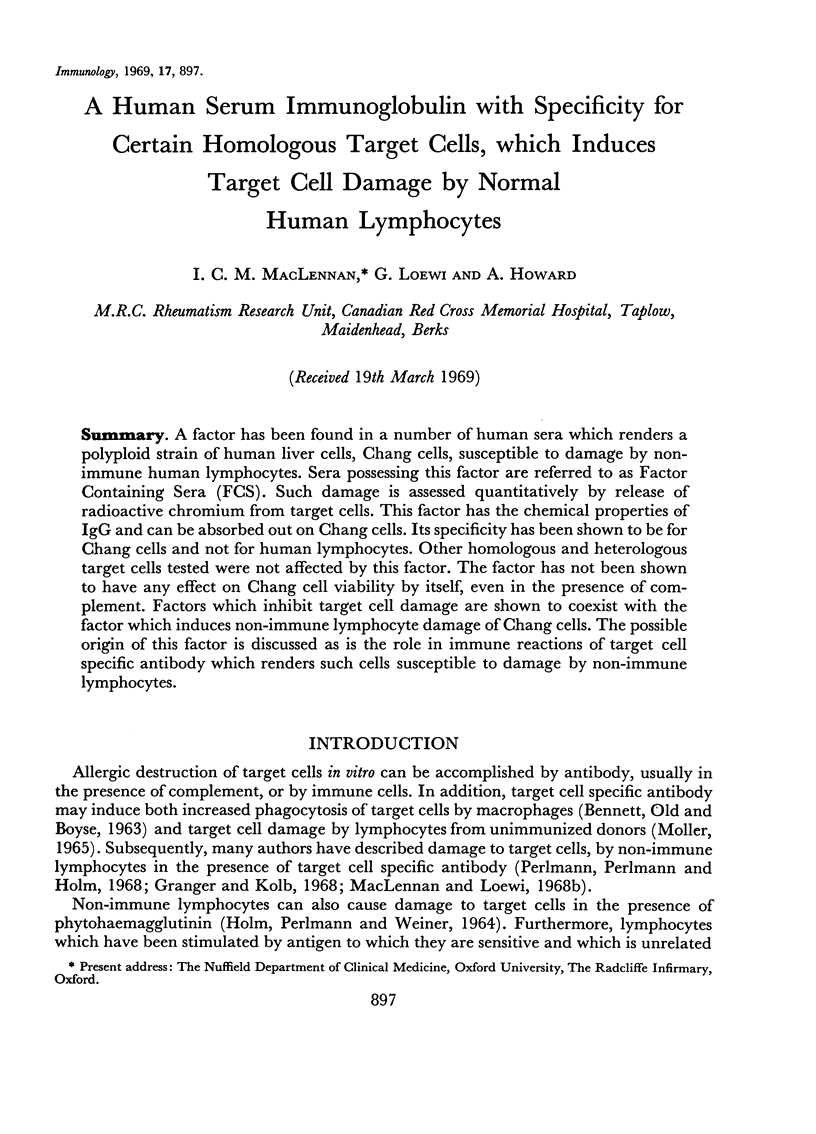

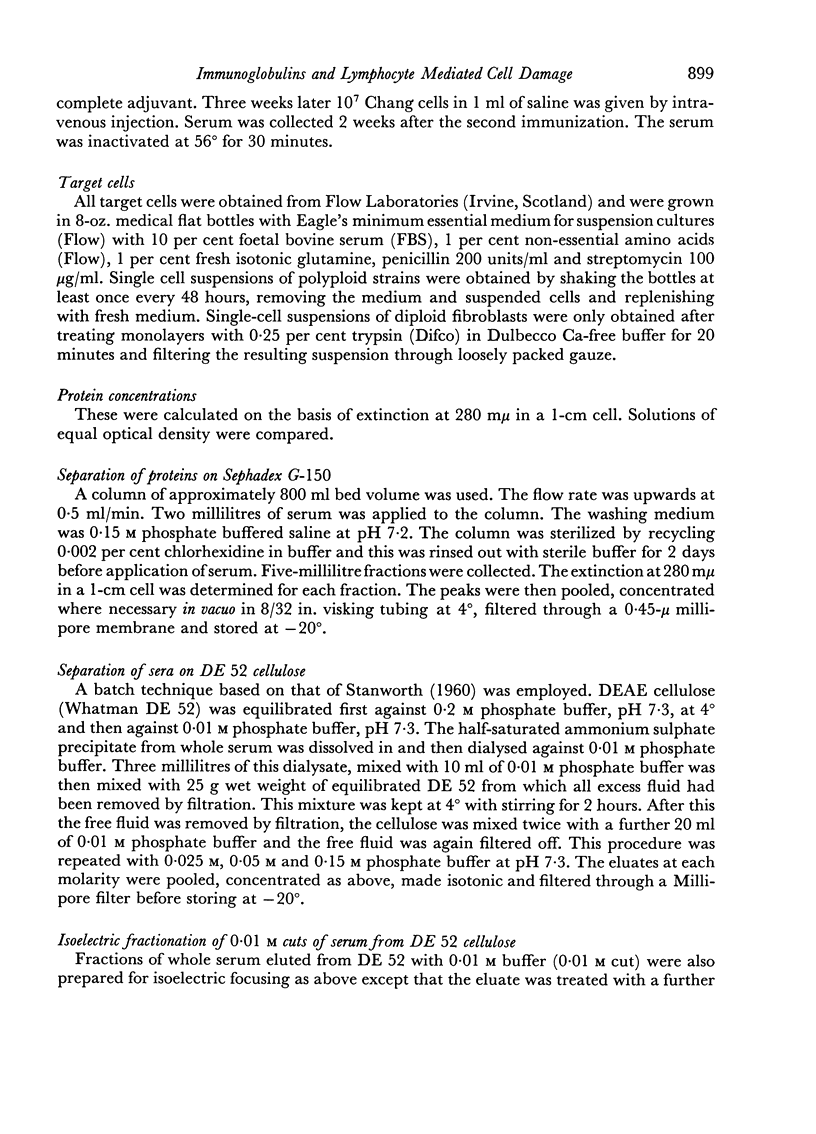
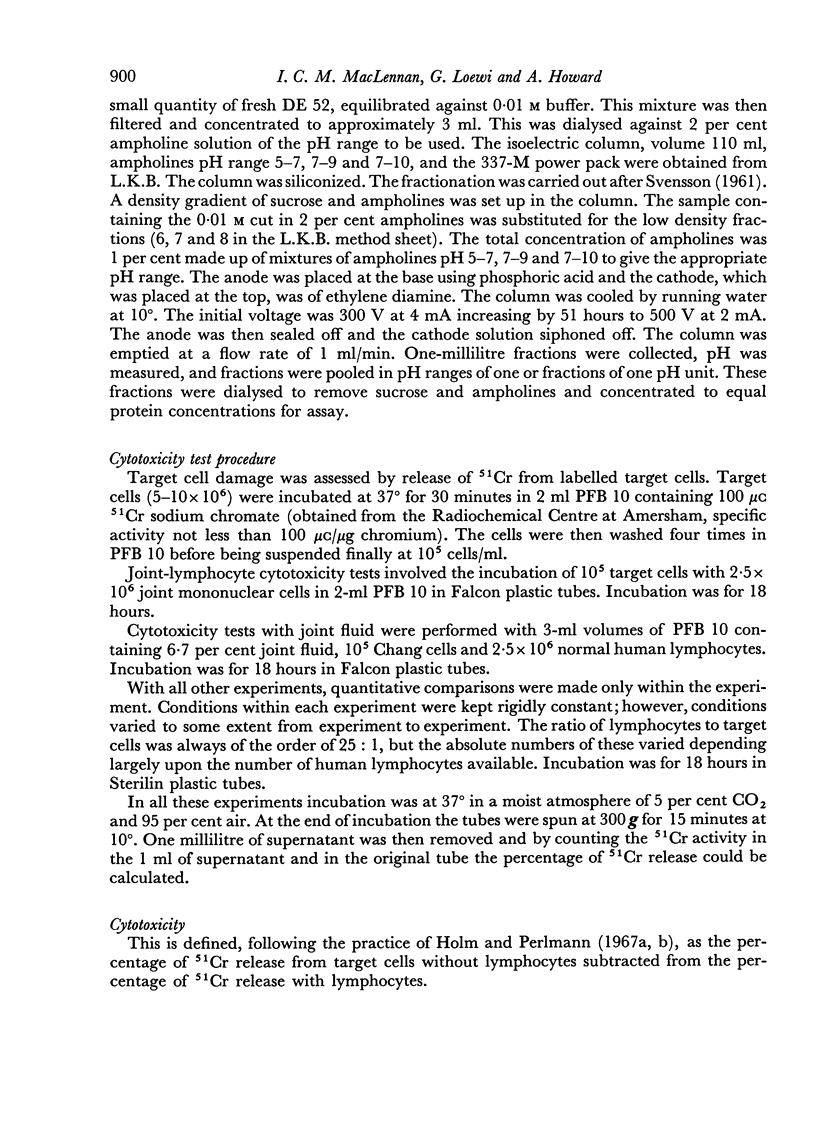
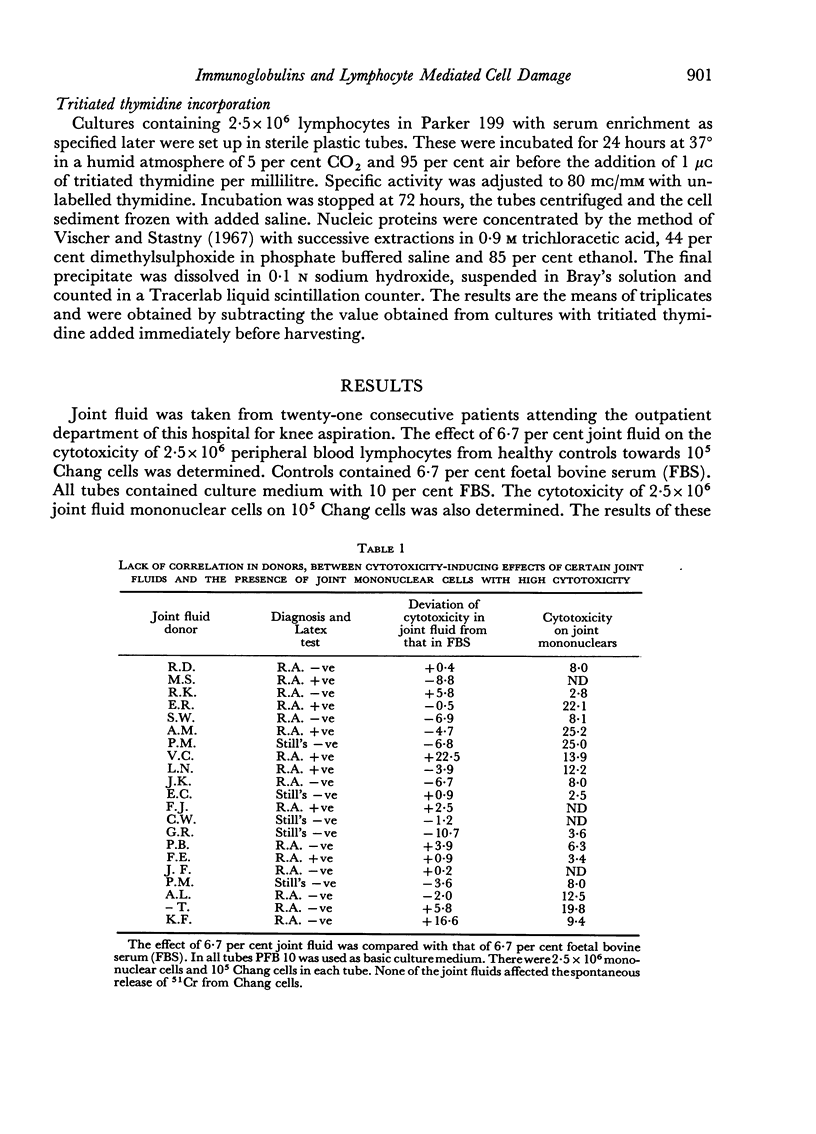
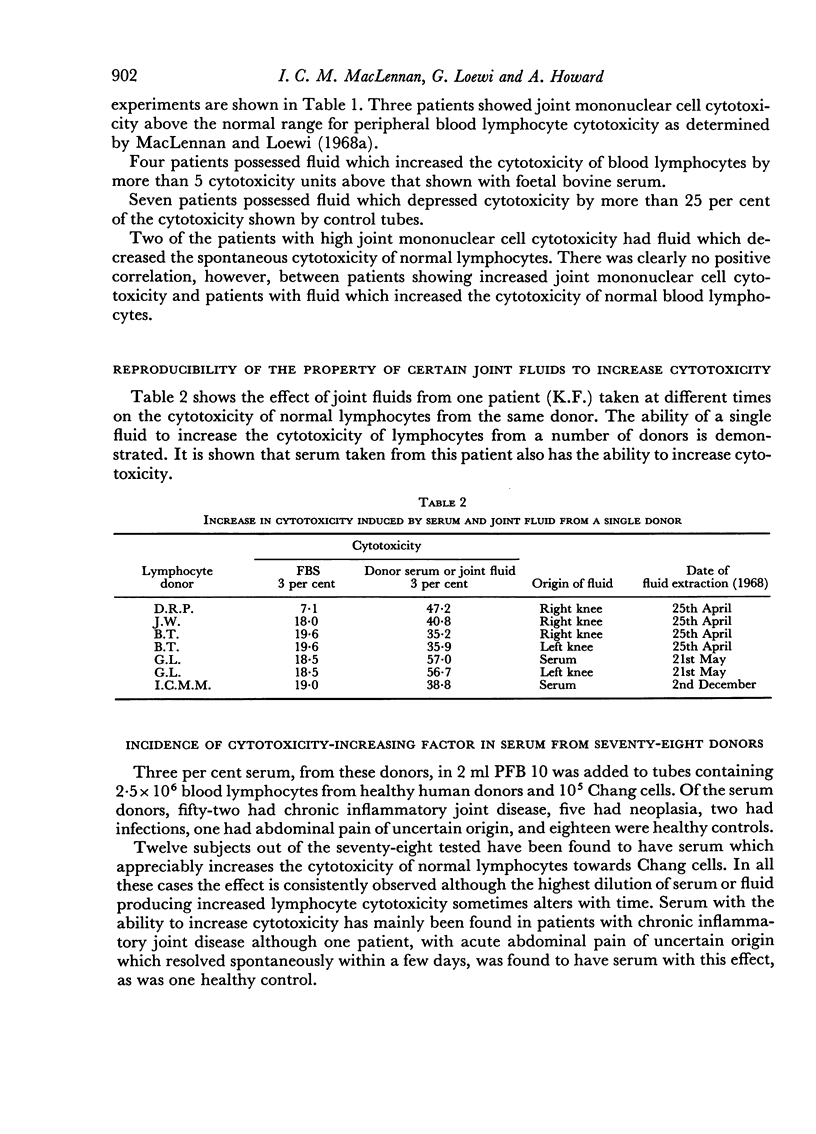
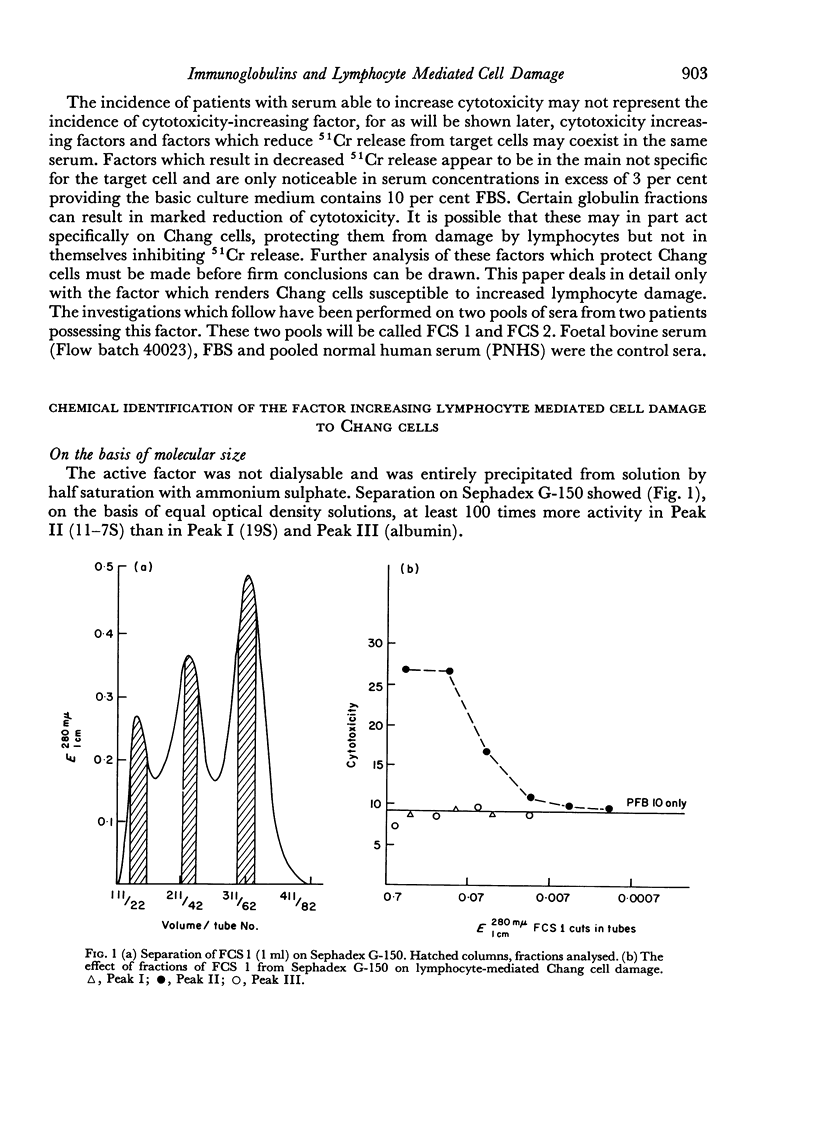
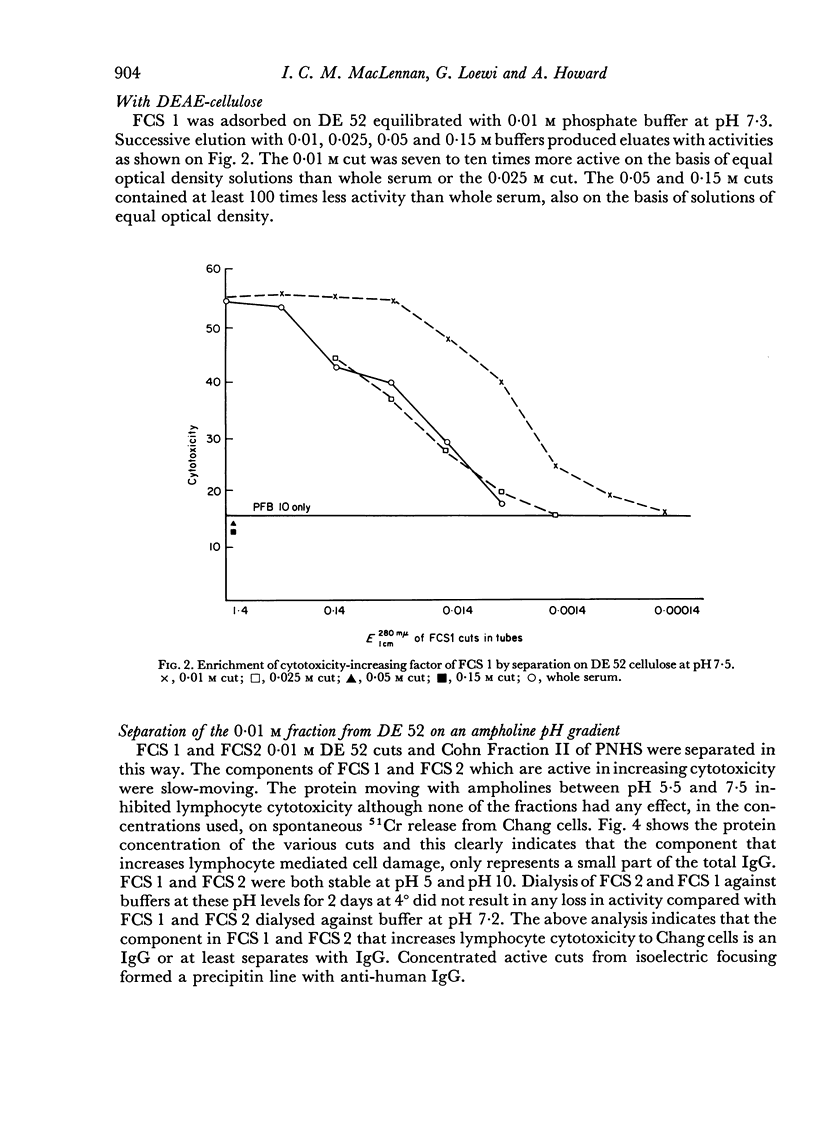
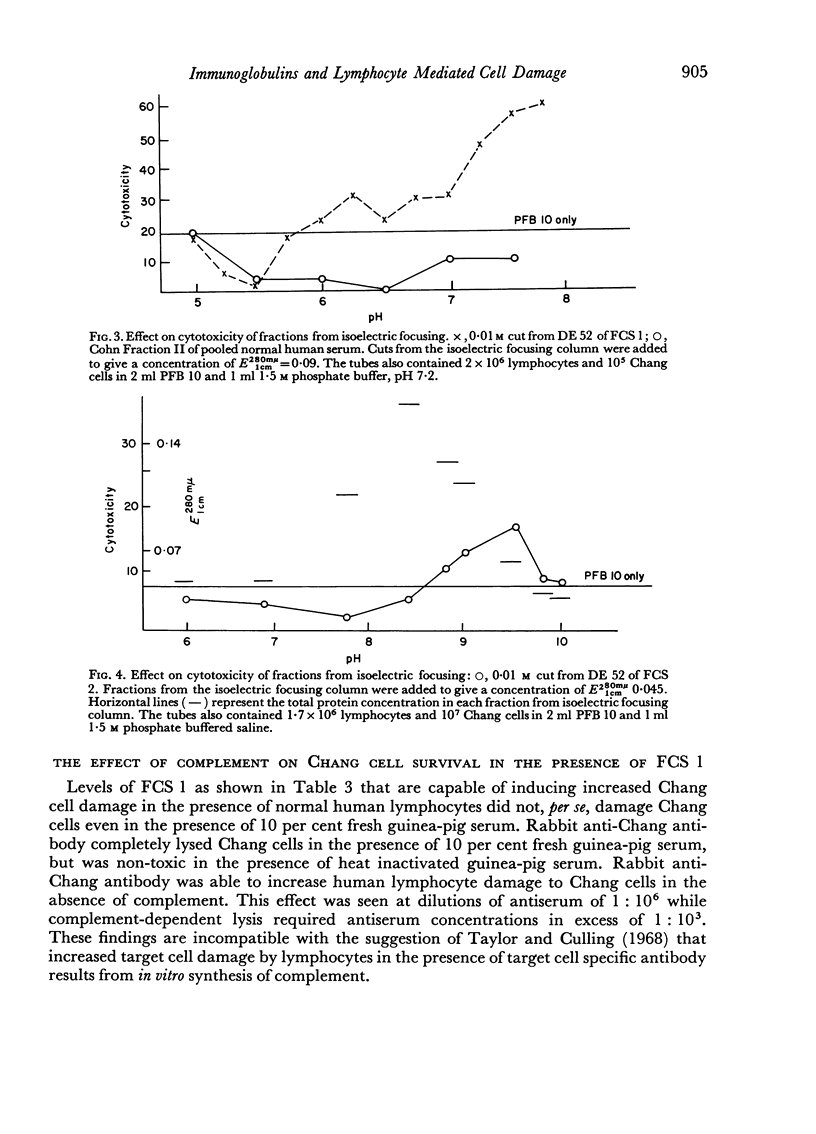
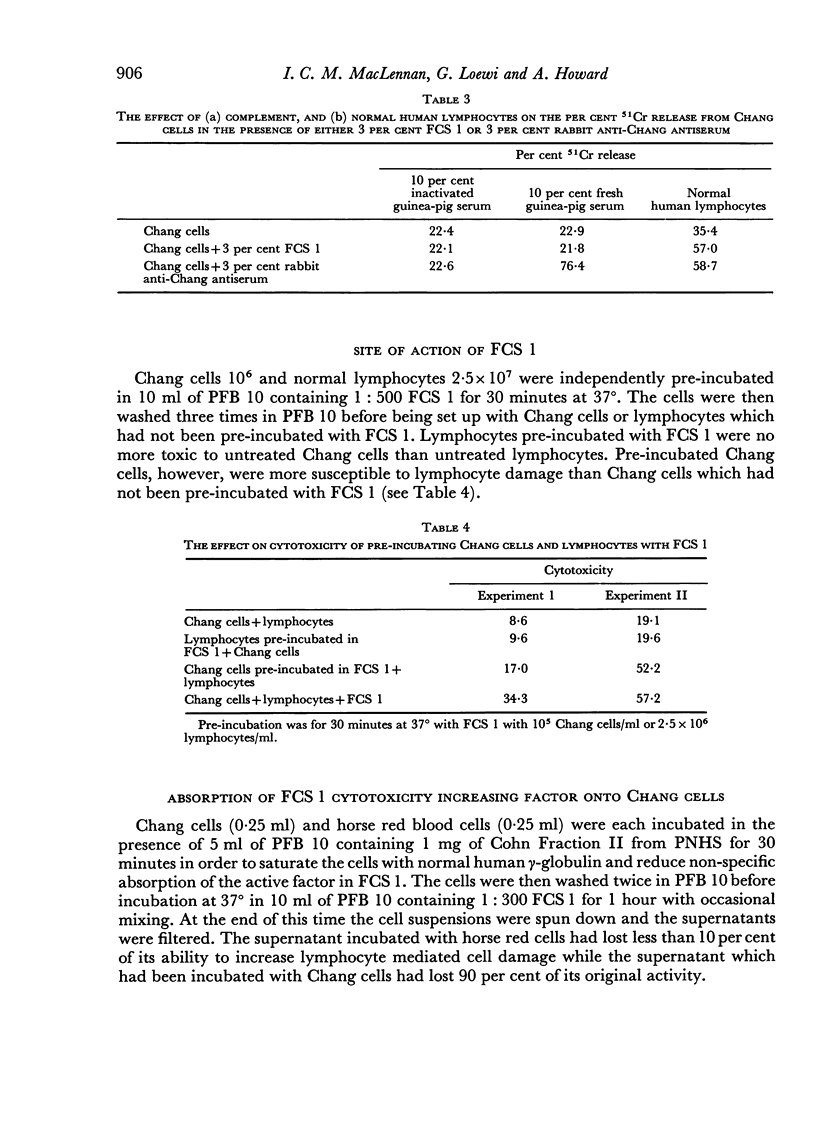

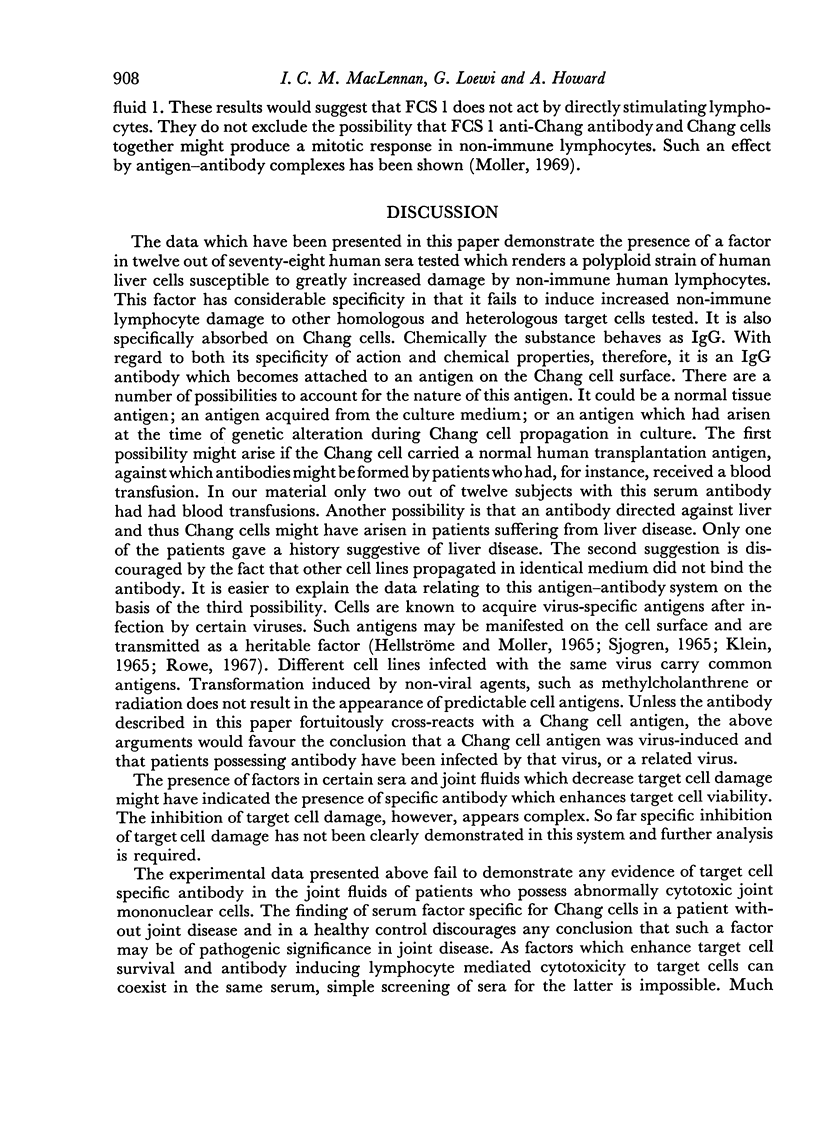
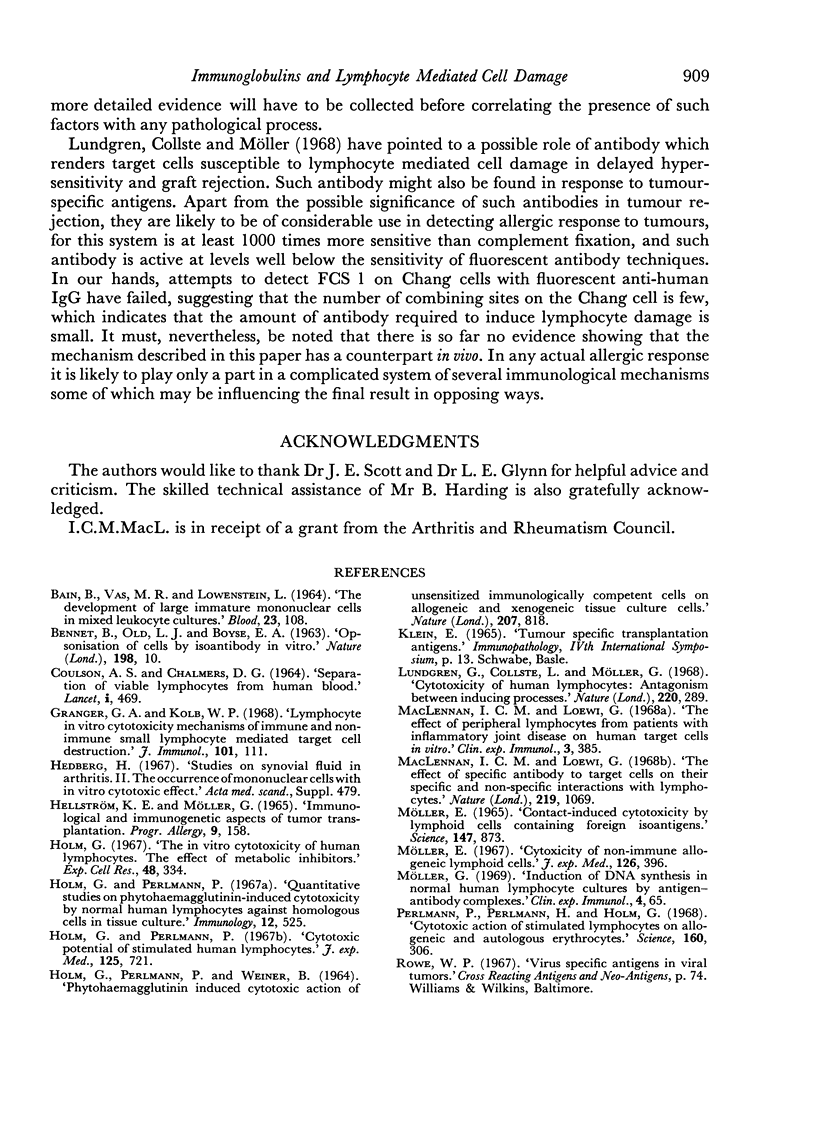
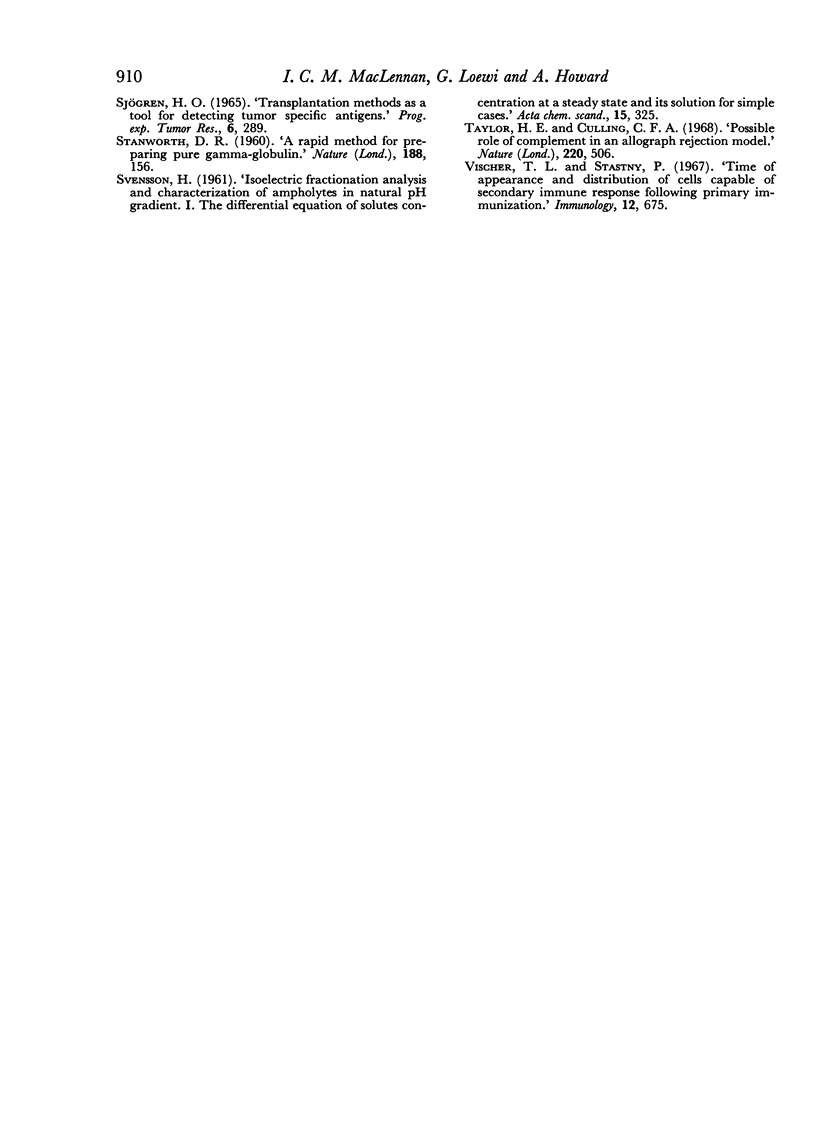
Selected References
These references are in PubMed. This may not be the complete list of references from this article.
- BAIN B., VAS M. R., LOWENSTEIN L. THE DEVELOPMENT OF LARGE IMMATURE MONONUCLEAR CELLS IN MIXED LEUKOCYTE CULTURES. Blood. 1964 Jan;23:108–116. [PubMed] [Google Scholar]
- BENNETT B., OLD L. J., BOYSE E. A. Opsonization of cells by isoantibody in vitro. Nature. 1963 Apr 6;198:10–12. doi: 10.1038/198010a0. [DOI] [PubMed] [Google Scholar]
- COULSON A. S., CHALMERS D. G. SEPARATION OF VIABLE LYMPHOCYTES FROM HUMAN BLOOD. Lancet. 1964 Feb 29;1(7331):468–469. doi: 10.1016/s0140-6736(64)90799-8. [DOI] [PubMed] [Google Scholar]
- Granger G. A., Kolb W. P. Lymphocyte in vitro cytotoxicity: mechanisms of immune and non-immune small lymphocyte mediated target L cell destruction. J Immunol. 1968 Jul;101(1):111–120. [PubMed] [Google Scholar]
- Holm G., Perlmann P. Cytotoxic potential of stimulated human lymphocytes. J Exp Med. 1967 Apr 1;125(4):721–736. doi: 10.1084/jem.125.4.721. [DOI] [PMC free article] [PubMed] [Google Scholar]
- Holm G., Perlmann P. Phytohaemagglutinin-induced cytotoxic action of unsensitized immunologically competent cells on allogeneic and xenogeneic tissue culture cells. Nature. 1965 Aug 21;207(999):818–821. doi: 10.1038/207818a0. [DOI] [PubMed] [Google Scholar]
- Holm G., Perlmann P. Quantitative studies on phytohaemagglutinin-induced cytotoxicity by human lymphocytes against homologous cells in tissue culture. Immunology. 1967 May;12(5):525–536. [PMC free article] [PubMed] [Google Scholar]
- Holm G. The in vitro cytotoxicity of human lymphocytes: the effect of metabolic inhibitors. Exp Cell Res. 1967 Nov;48(2):334–349. doi: 10.1016/0014-4827(67)90359-x. [DOI] [PubMed] [Google Scholar]
- Lundgren G., Collste L., Möller G. Cytotoxicity of human lymphocytes: antagonism between inducing processes. Nature. 1968 Oct 19;220(5164):289–291. doi: 10.1038/220289a0. [DOI] [PubMed] [Google Scholar]
- MOELLER E. CONTACT-INDUCED CYTOTOXICITY BY LYMPHOID CELLS CONTAINING FOREIGN ISOANTIGENS. Science. 1965 Feb 19;147(3660):873–879. doi: 10.1126/science.147.3660.873. [DOI] [PubMed] [Google Scholar]
- MacLennan I. C., Loewi G. Effect of specific antibody to target cells on their specific and non-specific interactions with lymphocytes. Nature. 1968 Sep 7;219(5158):1069–1070. doi: 10.1038/2191069a0. [DOI] [PubMed] [Google Scholar]
- MacLennan I. C., Loewi G. The effect of peripheral lymphocytes from patients with inflammatory joint disease on human target cells in vitro. Clin Exp Immunol. 1968 Jun;3(5):385–391. [PMC free article] [PubMed] [Google Scholar]
- Möller G. Induction of DNA synthesis in normal human lymphocyte cultures by antigen-antibody complexes. Clin Exp Immunol. 1969 Jan;4(1):65–82. [PMC free article] [PubMed] [Google Scholar]
- Perlmann P., Perlmann H., Holm G. Cytotoxic action of stimulated lymphocytes on allogenic and autologous erythrocytes. Science. 1968 Apr 19;160(3825):306–309. doi: 10.1126/science.160.3825.306. [DOI] [PubMed] [Google Scholar]
- Sjögren H. O. Transplantation methods as a tool for detection of tumor-specific antigens. Prog Exp Tumor Res. 1965;6:289–322. [PubMed] [Google Scholar]
- Taylor H. E., Culling C. F. Production of complement by spleen cells in vitro and its possible role in an allograft rejection model. Nature. 1968 Nov 2;220(5166):506–507. doi: 10.1038/220506a0. [DOI] [PubMed] [Google Scholar]
- Vischer T. L., Stastny P. Time of appearance and distribution of cells capable of secondary immune response following primary immunization. Immunology. 1967 Jun;12(6):675–687. [PMC free article] [PubMed] [Google Scholar]


